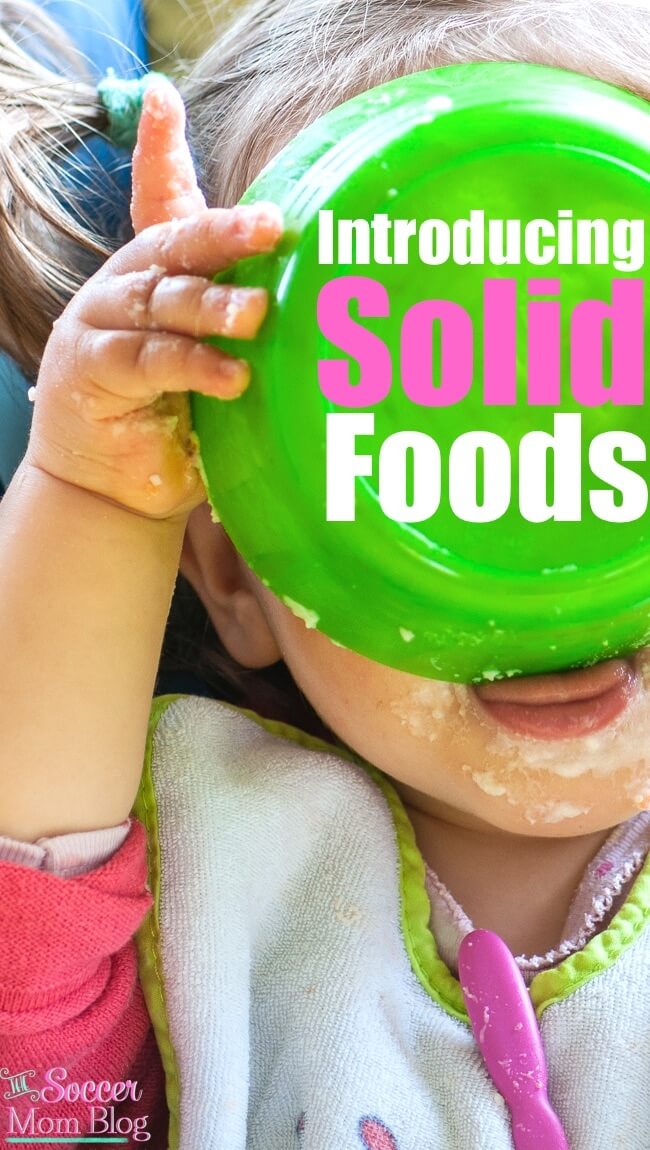It seems that parents are always asking one another: “what is your baby eating?”
Introducing solid foods is exciting process, but it can be a bit intimidating at first. There are so many questions: what should my baby eat? How much? What foods are dangerous? Is my baby getting enough vitamins? Iron? Agghh!
Take a deep breath.
We can get through this!
Read on for what worked for our family when introducing solid foods, as well as seven baby-approved foods that are surprisingly high in nutrients.
Where to start when introducing solid foods
Our first pediatrician, though very kind and well-meaning, was a little old school and pushed baby cereals as the first food. His main reason is that these cereals are fortified with iron.
There’s also another vocal camp among parents and pediatricians that recommends starting with fruit and vegetable purees. They argue that baby cereals are simply refined carbohydrates and offer little nutritional value.
My husband and I decided to skip cereals and start with fruits and veggies when introducing solid foods. We chose foods that were naturally high in iron and essential vitamins instead of foods where these nutrients were added back in after processing. Since we avoid processed foods in our own diet, it didn’t make sense to do the opposite for our baby.
Whatever you decide, don’t spend too much time worrying if you made the “right” choice. In the big scheme of things, your baby is only eating a small amount of these transition foods and it’s not going to make or break their development. You will eventually add in more solid foods and phase out cereals and/or purees.
Seven baby-approved foods that are surprisingly high in nutrients
As we moved on from purees to true “solid” foods, I researched things that our family enjoys to see what nutritional benefits they provide. That way I would actually know what my baby was getting! Here are some of the most surprisingly nutrient-dense foods that our baby gobbled right up:
- Salmon – Both of our daughters LOVE salmon! In addition to protein, omegas, and good fats, salmon has a TON of vitamin D. It’s our favorite protein and we try to serve it at least once a week. Not sure how to prepare salmon? Try this foolproof trick to cook perfect salmon every time!
- Beef – We chose ground beef because it is easy to chew. Our little one loved meat sauce from our spaghetti dinner. Beef is an amazing source of iron as well as protein.
- Bananas – This is one of my favorites because it is so easy to prepare: I simply cut a banana in half and let my baby go to town. She loves to hold it in both hands and gnaw on it. Vitamin B6, vitamin C, potassium, and fiber are just a few of the benefits. Bananas have a bad rap for causing constipation, but some research shows that they actually have the opposite effect. I can attest that AB eats them regularly and definitely does NOT get stopped up!
- Broccoli – We have broccoli often in stir-fries and other dishes. I’ll usually give my daughter a floret that she can hold and bite off smaller pieces. (I would suggest cooking broccoli until it is soft and easy to chew). Broccoli is full of vitamins and is said to help with vitamin D metabolization from other foods.
- Chicken – This is such a versatile protein! My daughter will eat it in all forms: from chicken salad (yes, with a little mayo) to Cuban mojo (roasted in a citrus garlic marinade). Chicken is extremely high in protein, contains ALL B vitamins, and is a source of iron.
- Mushrooms – Mushrooms are perfect to toss into a variety of dishes as they easily absorb flavor. Mushrooms (the various types will differ in the exact amount) provide LOTS of vitamin D, B vitamins, antioxidants, AND iron. Who knew?!
- Sweet Red Bell Peppers – Yep, peppers! They are like nature’s multivitamin, containing traceable amounts of over 15 vitamins and minerals.
What about vitamins?
Since I breastfed, our pediatrician strongly recommended vitamin D drops (ironically manufactured by a large formula company). He said that after six months, my breastmilk no longer contained enough vitamin D.
However, I had a real problem with the ingredient list: Polysorbate 80, artificial caramel coloring, artificial flavoring (so you have NO idea specifically what this is). I checked the label of my adult vitamins and there were none of these artificial ingredients, so why should baby vitamins have so many additives?
If you want a little extra assurance that there are no gaps in your baby’s diet, I would suggest organic vitamins. We used Rainbow Light Natural Multivitamin Powder — individual packets made it easy to pour and mix into bottles breastmilk or purees.
For more positive parenting tips, follow my board on Pinterest:
Follow Stacey @ The Soccer Mom Blog’s board Positive Parenting Tips on Pinterest.
*I am not a medical professional and my suggestions are just that: suggestions. Always do your own research and talk to your pediatrician when introducing solid foods or with nutrition questions.
- Paper Chain Octopus Craft - April 24, 2024
- Amish Sugar Cookies - April 19, 2024
- Marshmallow Playdough - April 18, 2024




Leave a Reply